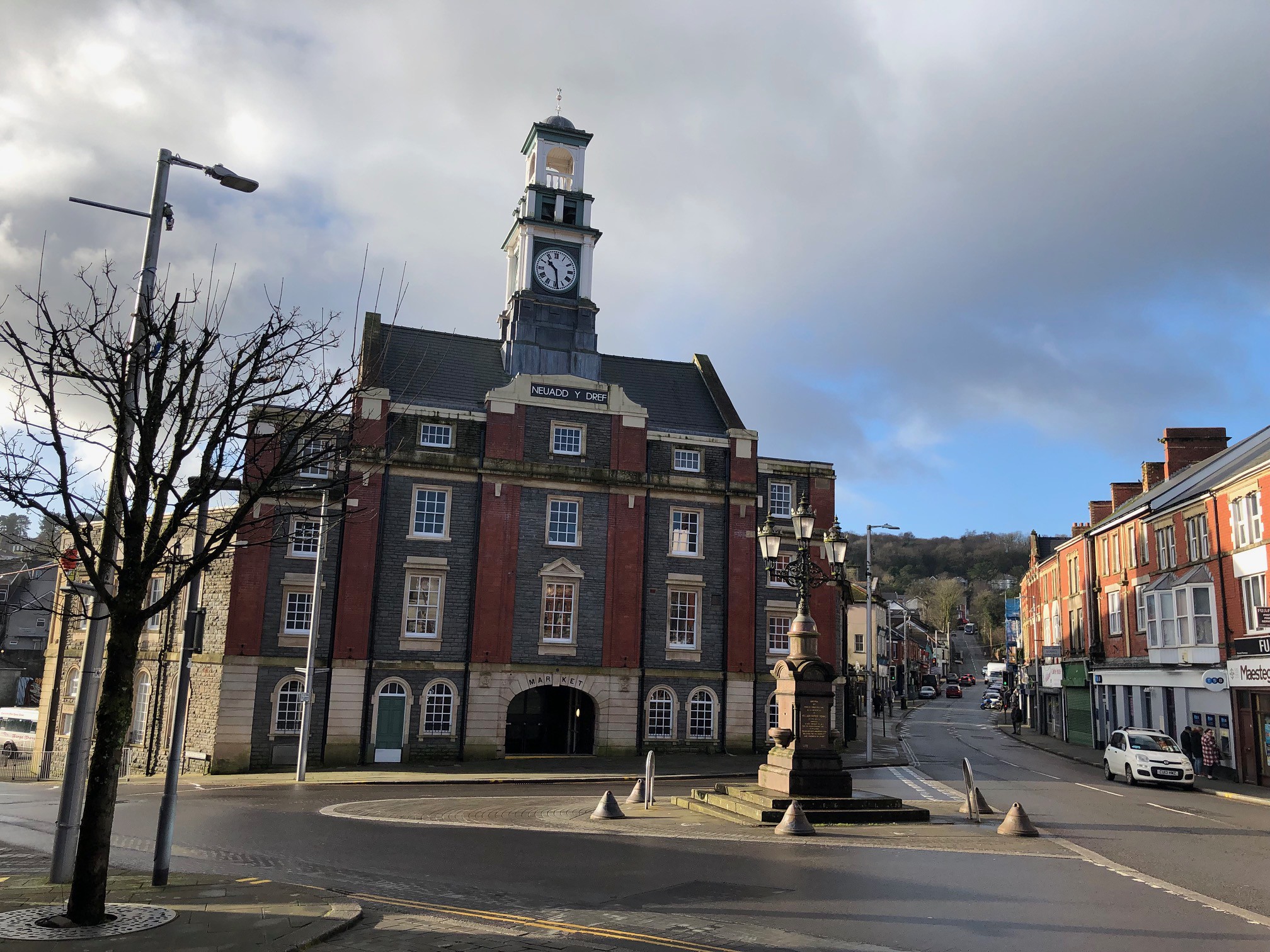
The last deep coal mine in the Llynfi valley, St John’s Colliery, just east of Maesteg, closed in 1985, at the end of Margaret Thatcher’s war against the miners. At its peak it employed nearly 1,500 men. There’s been no other source of work of comparable size in the area since – the local paper mill employs around 300 – and many residents travel south to work in Bridgend or other centres. Today, like many ex-coalfield towns, Maesteg looks a pale shadow of the thriving place it was at the turn of the twentieth century. Photographs of the period show numerous flourishing shops, theatres and chapels in Llynfi Street and Commercial Street. Today they’ve been replaced by the usual nail and vape shops, barbers, empty shops and closed pubs – though there are survivals, like an independent greengrocer, and new community uses have been found for buildings like the huge old Co-op building, Hartshorn House.

But what can look at first sight like continuous decline since the days of iron and coal masks developments that tell a different story – of cohesion, energy and enterprise in the town’s community today. There’s no better example in Maesteg than the Town Hall, which reopened to the public in November 2024 after a long period of renovation and extension.
Since it was first built in 1881 the Town Hall has always been the town centre’s outstanding building, a bold statement of the town’s self-confidence. Over the years it was altered considerably, and more recently the fabric fell into disrepair. In 2012 the idea of restoration was floated and in 2016 it was decided that a large project was needed. Awen Cultural Trust, to whom the local council had transferred responsibility for the cultural services it had previously provided itself, decided not just to repair the building but to give it a complete makeover, and attach a new, glass-fronted extension. With help from the National Lottery Heritage Fund, the European Union, the Welsh Government, Bridgend Council and several grant-aiding charities, the Trust has succeeded in giving back to Maesteg its greatest physical asset, enormously improved and packed with cultural and social benefits for its citizens.

The overall idea was to restore the building to its former state, stripping out later additions. The ground floor, previous occupied by the town market, has been converted into an attractive and welcoming public library, including an imaginative children’s library (and mini-playground). A smaller space contains the local history collections, and there’s a long wall summarising the rich history of Maesteg and its area. Between the library and the main entrance, now at the side of the Town Hall, is an open atrium with a coffee shop. Upstairs, the architects, Ross Hartland and Purcell Architects, have brought new life, and every modern facility, to the main theatre, a truly stunning space. It comes complete with the six paintings Maesteg was given before his death by Christopher Williams, a native of the town and once Wales’s leading painter: cleaned and restored, they’re hung along the side walls. There’s also a delightful brand-new space, the ‘Orange Box’, a theatre and cinema studio and meeting area, with comfortable raked seating.

The new Town Hall is a triumph. Not just as a fine building, expertly designed, rebuilt and extended, but as an expression of what used to be called ‘civic pride’: proof of a determination by a large number of people in and around Maesteg to reassert their right to cultural life, to renew their common inheritance from the past, and to face the future with confidence.
That pride is obvious in a bilingual film made for Awen to mark the reopening of Maesteg Town Hall by students of Ysgol Maesteg and Ysgol Gyfun Gymraeg Llangynwyd. The film itself is a good example of creative learning, since the skills the students were practising – scripting, interviewing, speaking to camera, directing – are exactly the skills they’ll need later in the cultural economy of the future.

Mr D. Grey, Chairman of the Board of Health, put it all very well during the opening ceremony for the Town Hall in 1881 (his words are reproduced on the wall of the new atrium). He said that ‘it was not the town hall of a party – the hall of a few – it belonged to the people of Maesteg’. The town has its problems today, but, as long as it still has the community resources and determination to act collectively for the common good, it has hope.


Leave a Reply